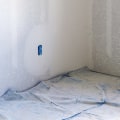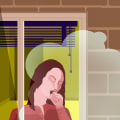The human lungs are remarkable organs equipped with mechanisms designed to protect and clean themselves from various airborne contaminants, including dust. Every day, the air we breathe contains particles like dust, pollen, and pollutants. Fortunately, the lungs have evolved to combat these intrusions effectively, ensuring that the respiratory system functions optimally. This self-cleaning process involves multiple components, from tiny hair-like structures called cilia to the production of mucus, all working in harmony to trap and expel unwanted particles.
How the Lungs Handle Dust
When dust particles enter the respiratory system through the nose or mouth, the body’s first line of defense is the nasal passages. These passages are lined with hairs that filter out larger particles. Smaller particles that make it past this stage enter the trachea and bronchi, where mucus traps them. The cilia, which constantly move in a wave-like motion, then work to push this mucus—and the dust it contains—upward toward the throat, where it can be swallowed or coughed out. This process is essential for keeping the lungs clean and preventing the buildup of harmful substances.
The Role of Alveoli
While most dust particles are trapped and expelled before they reach the lungs’ deeper regions, some fine particles can penetrate the alveoli, the tiny air sacs responsible for gas exchange. Here, specialized immune cells called macrophages come into play. These cells engulf and break down harmful particles, preventing them from causing damage or inflammation. Although this process is effective, the efficiency of macrophages can be reduced with prolonged exposure to high levels of dust or pollutants.
Can the Lungs Fully Recover from Dust Exposure?
The lungs’ ability to self-clean is impressive, but it has its limits. Occasional exposure to dust is manageable for most people, and the lungs are generally capable of clearing out these particles over time. However, chronic exposure to high levels of dust, such as in occupational settings like construction or woodworking, can overwhelm the lungs’ defense mechanisms. This can lead to conditions such as chronic bronchitis, silicosis, or other respiratory illnesses. For individuals in such environments, taking protective measures, including wearing masks and ensuring proper ventilation, is crucial. Companies like TX R&R - Texas Repair & Remodel emphasize the importance of workplace safety, especially during remodeling or repair projects that generate significant dust and debris.
Factors That Affect Lung Self-Cleaning
Several factors influence how effectively the lungs can clean themselves. Smoking, for instance, damages cilia and reduces their ability to move mucus, impairing the lungs’ cleaning process. Pre-existing respiratory conditions such as asthma or chronic obstructive pulmonary disease (COPD) can also compromise the lungs’ ability to expel dust and other particles. On the other hand, maintaining good respiratory health through regular exercise, a balanced diet, and avoiding pollutants can enhance the lungs’ natural defenses.
Supporting Lung Health
While the lungs are equipped with robust self-cleaning mechanisms, supporting their function is essential, especially for individuals exposed to higher levels of dust. Staying hydrated helps thin mucus, making it easier for the cilia to transport it out of the respiratory system. Breathing exercises and activities that promote deep breathing, such as yoga or swimming, can improve lung capacity and function. Additionally, minimizing exposure to dust through simple actions like keeping living spaces clean and using air purifiers can further protect respiratory health.
The Long-Term Outlook
For most people, the lungs’ self-cleaning abilities are sufficient to handle everyday exposure to dust. However, those in high-risk environments or with compromised lung function must take extra precautions to prevent long-term damage. Understanding how the lungs work to protect themselves highlights the importance of maintaining a clean and safe environment, both at home and at work.
A Testament to Human Resilience
The lungs’ ability to self-clean is a testament to the body’s resilience and adaptability. This natural process ensures that we can breathe freely even in less-than-ideal conditions. By understanding and supporting the lungs’ defense mechanisms, we can take proactive steps to preserve respiratory health and prevent potential complications. Whether through personal habits or workplace safety measures, prioritizing lung health is vital for overall well-being.



